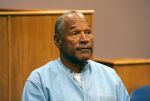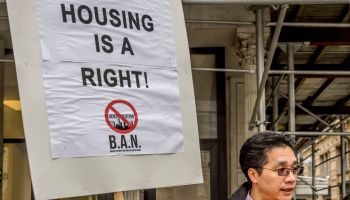DENVER — When President Barack Obama and Mitt Romney meet in their first debate of the 2012 presidential campaign, they will do so in a hotly contested swing state where Romney has managed to stay competitive with the president.
Romney, the Republican presidential nominee, has not been so fortunate in other key swing states such as Ohio, and to some extent, Virginia. Neither of these states is beyond Romney’s reach, but Ohio has looked by far the grimmest for him.
Colorado, however, remains narrowly in Romney’s favor, at least according to the GOPer’s internal polls. Public polls show him slightly behind.
Colorado received a little less attention from the candidates and press than the other more high-profile swing states: It has been visited 26 times by the two candidates and their running mates, along with their wives since early June, according to the Washington Post’s campaign travel tracker. Ohio, by comparison, has 64 visits, while Florida has 68, Virginia has 52, and Iowa has 43.
But if Romney were to lose Ohio, Colorado would then become part of a last-ditch, desperate attempt to piece together enough electoral votes to get to 270. In addition to Colorado, he would need to win Florida, North Carolina and Virginia, along with Nevada and Iowa. And even then, he would still only tie Obama, 269-to-269, assuming that the president took swings states like Wisconsin and New Hampshire.
Former President George W. Bush won the Centennial State twice, by 8 points in 2000 and just under 5 points in 2004. Prior to that, Colorado voted for the Republican presidential candidate every four years since 1972, with the exception of 1992, when the state backed former President Bill Clinton, only to switch back to his Republican challenger Bob Dole four years later.
State-based political experts from both parties said that Colorado remains a purple state, leaning neither right nor left, even though the impression is that its population growth from 4 million to 5 million over the past decade, combined with the trend of the last three presidential elections, might suggest it is starting to slide away from center right and toward center left.
“I think we’re still a center-right state,” said former Rep. Bob Beauprez (R-Colo.), who mounted an unsuccessful run in 2006 for governor.
Here are four questions to watch in Colorado over the next month:
1. Can Democrats catch up to Republicans in voter registration?
Democrats are close, following a productive September. They have had to work hard to reduce the number of inactive Democratic voters. That’s important in a state where 65 percent of voters cast ballots by mail in 2008. If voters remain on the inactive list, they don’t automatically get a ballot mailed to them. And Democrats saw many of the new voters they had recruited in 2008 moved off the active list to the inactive list when Colorado Secretary of State Scott Gessler (R), ruled that those who did not vote in the 2010 elections, would be taken off the permanent mail-in vote list, and would have to request a mail-in ballot.
In January, Republicans had 793,098 active voters compared to Democrats’ 680,099. By Sept. 1, Republicans were still up by almost 100,000 voters, 837,732 to 739,778.
But as of Oct. 1, Democrats had closed that gap considerably, adding 67,097 new names to their active list, while Republicans added half that, 33,543. The Republicans active lead went down in one month from roughly 100,000 to just about 60,000.
Romney’s political director, Rich Beeson, said even if Democrats catch up, they are only going to be “treading water.”
“They hemorrhaged so many voters over the last four years,” Beeson told The Huffington Post. “All of the voter registration that they’re doing is essentially backfilling.”
A senior Obama campaign adviser in Colorado, who asked to remain anonymous in order to speak more frankly, acknowledged, “We lost a lot of folks who went on the inactive list.”
Including inactive voters, Republicans have a small lead when comparing the total number of Republicans and Democrats, but the two parties are essentially tied.
There are, however, 1.2 million unaffiliated voters in the state, compared to 1.1 million Republicans and 1.1 million Democrats.
2. Which way will independents break?
Colorado, where unaffiliated voters are a bigger slice of the electorate than either Republicans or Democrats, is a state that values independence and moderation, Beauprez told The Huffington Post.
“We can certainly be accepting of Democrats. Maybe our governor is one of those, and even Bill Clinton, who is considerably more pliable than Barack Obama, is one as well,” Beauprez said.
But he suggested that a libertarian streak among independents may tilt unaffiliated voters away from the president, who he labeled “a very dogmatic, very hard left ideologue who hasn’t delivered.”
“Colorado historically likes to be left alone. They like a little less government in their face than this administration has delivered,” Beauprez said.
But about half of the voters that the Obama campaign is signing up to register are labeling themselves unaffiliated. However, they are going to support Obama, according to a Democratic operative in the state familiar with the campaign’s voter-registration efforts. Registering no party affiliation, this Democrat said, is their expression of independence, but they will be in the president’s column.
Gov. John Hickenlooper, a Democrat, said Romney needs to do a better job of connecting at a personal level with swing voters. “One of the things I hear frequently from independent voters is they’re not sure what’s driving him,” Hickenlooper said, at a forum sponsored by National Journal, The Atlantic, and AllState.
Polling data, however, indicates that independents are not as down on Romney in Colorado as much as they are in other states. A survey by Purple Strategies over the month of September showed that Romney’s highest favorability rating among independents, in six swing states, was in Colorado. Romney was viewed favorably by 42 percent of independents and unfavorably by 47 percent. It was the smallest difference between the favorable and unfavorable ratings in all six states, at minus 5 points. Romney was underwater by between 11 and 21 points among independents in the other five states.
“It’s a very informed electorate,” said Beeson, a fifth-generation Coloradan who oversaw the political operation in the state for both of George W. Bush’s presidential campaigns and for Sen. John McCain’s (R-Ariz.) 2008 effort. “There’s a lot of transplants that moved in. there’s a reason they have moved here from other states, and don’t’ necessarily want that to happen here.”
3. Can Romney halt the Democrats’ margin march?
The overwhelming trend from the last three presidential elections is that Democrats expanded their margins of victory in the counties where they are strong, and reduced the Republican advantage in key GOP counties.
Take El Paso County, home to Colorado Springs’ large evangelical population. In 2000, Bush beat former Vice President Al Gore by a huge number, 161,361 to 77,648. In 2004, Bush still won big, but by a bit less, 128,294 to Sen. John Kerry’s (D-Mass.) 61,799. His roughly 80,000-vote edge was down to roughly 60,000. In 2008, it moved down to 50,000. McCain won El Paso County, 155,914 to 104,670, but Obama’s numbers were way up from where Gore was eight years prior.
Meanwhile, the Democrats’ edge in places like Denver County, home to the city of Denver, has exploded. Gore beat Bush 122,963 to 61,224 in 2000. Kerry beat Bush 166,135 to 69,903 in 2004. And Obama obliterated McCain, 195,499 to 60,226, in 2008. The Democratic margin went from roughly 60,000 to almost 100,000 and then to 135,000.
The Obama campaign adviser said he felt “pretty good about Democratic counties.”
“Our ability to cut into their base is what’s in question to some point,” he said, adding that Republican super PACs “ran an absurd amount of ads in Colorado Springs over the summer.”
Beeson said that unlike in 2008, the social conservatives will be energized to vote because of concerns about religious liberty, spawned by Obama’s executive order that religious institutions provide emergency contraception to employees, and by the president’s support for gay marriage.
And, he said, Democrats “are not going to get the same turnout in Denver and Boulder that they got before.”
“You’re not going to see [Colorado State University] and [University of Colorado] Boulder and those Denver campuses turn out in huge numbers, and if they do we’re getting a piece of them because those that are about to graduate can’t get a job,” Beeson said.
4. Who will win Jeffco?
Jefferson County, also known as Jeffco, is the state’s key swing county. In 2000 and 2004, it went for Bush, but in 2008 Obama flipped it. It is a western suburb of Denver that borders the Rocky Mountains, and while it’s a place many people have moved to for quality of life, it was also where the Columbine shootings took place in 1999.
The last three elections have been close in Jeffco. Bush won 120,138 to 100,970 over Gore in 2000. Bush beat Kerry 140,644 to 126,558 in 2004. And then Obama beat McCain 155,020 to 129,291 four years ago.
For Romney, staying close and hopefully winning JeffCo, along with the southeast Denver suburbs in Arapahoe County, is key, along with ratcheting up their turnout in the rural parts of the state, which individually are not numerically significant, but taken together can give a Republican a significant number of votes.
Beauprez was optimistic.
“The crowds have been remarkably huge, especially for a challenger to an incumbent. Maybe I’m just looking at anecdotal stuff. But crowds that big, the relatively few numbers of Obama signs and stickers. Honestly, I feel very good about where Romney is,” he said. “I think we’re going to win this thing.”
http://www.huffingtonpost.com/2012/10/03/debate-colorado-presidential-obama-romney_n_1935996.html
Article Courtesy of The Huffington Post















